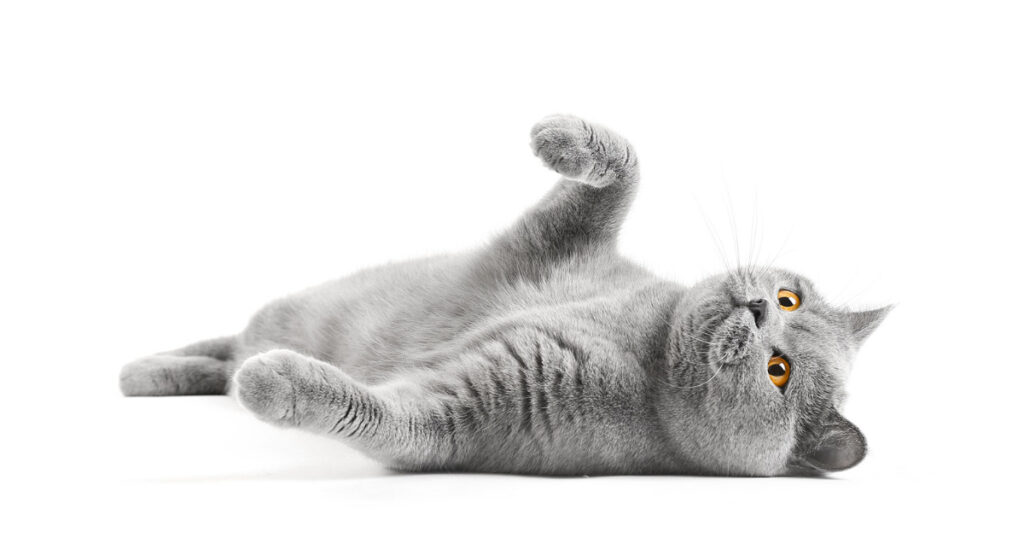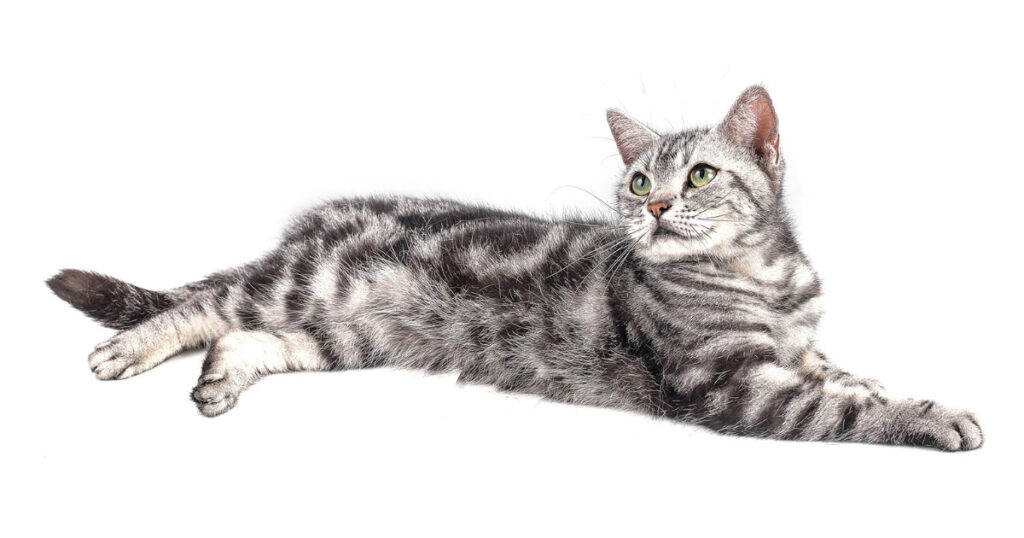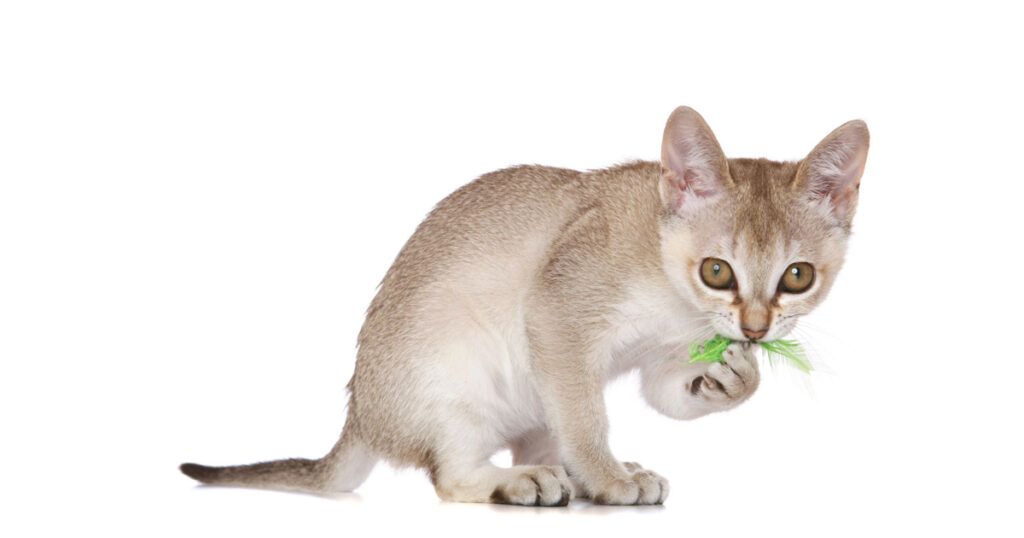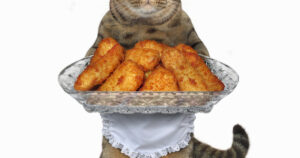With their plush, low-maintenance coats and energetic personalities, short hair cat breeds make ideal feline companions.
Shorthairs are a great option for those wanting a pet with minimal grooming needs yet loads of love to give.

Explore some of the most popular short hair cat breeds and their charming qualities in this post.
Find out why these kitties have won over so many hearts!
Physical Traits of Short Hair Cat Breeds
Short hair cat breeds are recognizable by their short, dense coats that lie close to the body. Their fur is typically thick and full, with a soft undercoat and glossy topcoat. This gives short hair cats a plush, fluffy feel when petted. The coat requires very little maintenance compared to longhair cat breeds, hardly shedding and rarely matting.
Short hair cats come in a wide variety of colors and patterns. Common coat colors include black, white, orange, gray, and brown tabby. Some breeds exhibit unique patterns like spots, ticks, swirls, and mink colors. Eye color can range from gold, green, hazel, blue, and odd-eyed.
Grooming short hair cats is simple, requiring weekly brushing to remove dead hair. An occasional bath may be needed if they get dirty. Their coats naturally repel dirt, oil, and dander. With minimal shedding, they make great pets for those with allergies.
Popular Short Hair Cat Breeds
Many pedigreed and mixed-breed cats fall under the short hair category.
Some of the most popular breeds are:
British Shorthair

The British Shorthair is one of the most widely recognized short hair cat breeds. Originating from European domestic cats, the breed has a bulky, muscular body and round face. Their medium-sized structure has a broad chest, strong shoulders, and short thick legs suited for sturdy weight support.
British Shorthairs come in over 100 different coat colors and patterns. Popular combinations include blue, black, white, silver tabby, golden tabby, calico, and brown tabby. Their eyes are large, round, and spaced widely apart. Eye color varies depending on coat color.
These gentle giants are chilled-out, easygoing companions. Their calm, friendly personalities make them exceptional pets for families with children. British Shorthairs get along well with other pets and politely greet strangers. While playful and curious, they are not overly demanding of attention.
American Shorthair

The American Shorthair breed has been loyal mousers on North American farms for centuries. They have muscular bodies slightly longer and leaner than the British Shorthair. Their strong limbs and large paws make them skilled hunters.
The American Shorthair coat is short, thick, and shines with a glossy sheen. Silver tabby is the most iconic pattern but comes in various colors like brown tabby, calico, tortoiseshell, black, white, and red. Their eyes are large and expressive, ranging from gold to green in color.
Intelligent, playful, and adaptable, American Shorthairs thrive as indoor family cats. They energetically play fetch and learn tricks but are also content to snuggle in laps once playtime ends. This versatile breed remains an ideal house pet for busy, active households.
Russian Blue

With their bright green eyes and silver-blue short coat, the Russian Blue is a distinctive shorthair cat breed. Their soft, smooth fur gives them a neat, sophisticated appearance. Russian Blues have graceful, long bodies with long legs, making them appear more delicate than other shorthairs.
Russian Blues are quiet, gentle, and committed in temperament. While not overly needy for attention, they form deep attachments to their loved ones. They often prefer interacting with family members over strangers or other pets. Owners describe them as shadow cats for their tendency to follow everywhere.
Despite their reserved nature, Russian Blues also have lively, playful sides to their personalities. They stay kittenish well into their senior years. Their short, plush coat sheds minimally, releasing far less dander than other breeds.
Abyssinian

The Abyssinian is named after Abyssinia, the former name of Ethiopia, where they originated. They are recognized by their distinct ticked tabby coat, giving an agouti appearance. Each hair has alternating light and dark bands that resemble streaks on a zebra’s coat.
Abyssinians have wedge-shaped heads with tall, cupped ears and almond-shaped eyes. They are medium in size with lean, graceful bodies. Intelligent and active, Abyssinians adore climbing high, playing with puzzles, and learning tricks. Despite their liveliness, they are also quite people-oriented and affectionate.
Playful yet clever, the Aby welcomes new experiences while remaining alert to danger. They thrive when given interactive toys and playtime. While sometimes independent, Abyssinians prefer not to be alone for long periods. They will peck their owners for attention!
Devon Rex

The Devon Rex breed is often described as an alien or pixie cat. They have slender pixie bodies, splayed ears, flared nostrils, and huge eyes. Their coat consists of loose, tousled waves reminiscent of poodle fur. The texture ranges from tight to loose curls like a lamb’s coat.
As kittens, Devons often look skinny before filling out. They come in virtually any coat color and pattern imaginable. White, black, brown, cinnamon, blue, lavender, tortoiseshell, and calico patterns are common. Eye color ranges from gold, green to blue.
The Devon Rex’s personality is just as distinctive as its coat. Naughty, playful, and thriving on human interaction, the Devon craves company. They learn tricks, play fetch, and create chaos when bored. Despite their lively nature, Devons enjoy cuddling with their favorite people.
Cornish Rex

With its tight curls and waves, the Cornish Rex has a uniquely textured coat. Their short, fine fur ranges from short tight curls to longer loose coils over their slender bodies. Some Cornish Rex coats appear nearly straight until the light catches their waves.
This breed has oversized ears set high on a wedge-shaped head with a slender nose and high cheekbones. Eye color ranges from blue to gold and green. Cornish Rex coats come in white, black, chocolate, cinnamon, lavender, and over 100 variations.
Don’t let their fragile appearance fool you – the Cornish Rex is a big personality in a small package. They have plenty of kitten-like mischief and energy. Yet they adore snuggling with their families, bonding strongly with their preferred people. Playful, affectionate, and highly social, the Corn Rex thrives on attention.
Siamese

With its iconic “pointed” coat, bright blue eyes, and loud vocalizations, the Siamese is likely the world’s most recognized short hair cat breed. They have light fur on the body that darkens dramatically on the face, ears, legs, and tail. This dark pigment results from a heat-sensitive enzyme.
Along with their signature points, Siamese have wedge-shaped heads, large ears, and long, tubular bodies. Their lean, flexible build helps them climb, jump, and play. Siamese kittens are born white, developing points as they mature.
As active, social cats, Siamese thrive on interaction and attention. They will “talk” persistently to their owners in various vocal tones. While intensely bonded with their families, Siamese can be suspicious of strangers. Their intelligence and curiosity keep them constantly stimulated. Proper attention and training curb destructive behaviors.
Scottish Fold

The Scottish Fold’s ears are their defining trait, folded forward and downward to give a cap-like appearance. Their wide, round eyes and head shape contribute to a sweet expression. Scottish Fold bodies are well-rounded with a padded, cuddly feel. They have medium-length coats that can be short or long-haired.
Most Scottish Fold coats are tabby patterns or solid colors like white, black, blue, cream, silver, or red. Occasionally more exotic colors like lavender and chocolate brown occur. Their round eyes range from gold, copper, and green to brilliant orange and yellow.
Despite their somewhat sad appearance, Scottish Folds have sweet, loyal personalities. They tend to bond strongly with their families while remaining polite and friendly to newcomers. While not overly demanding, they enjoy playing games, learning tricks, and interacting with their preferred people. Their calm demeanor and soft voices make them relaxing companions.
Munchkin

Munchkins are best known for their short, stubby legs reminiscent of Dachshunds and Corgis. A spontaneous genetic mutation causes pseudoachondroplasia – disproportionately short limbs relative to their body size. Besides their legs, Munchkins have medium-length coats and normal-sized heads and tails.
These miniature dwarves have broad chests and low bellies with elongated bodies. Their magnified head size compared to their legs gives them a cute, kittenish look throughout adulthood. Munchkins come in short and long-haired varieties, exhibiting virtually any coat color/pattern.
Despite their small legs, Munchkins have big, outgoing personalities. They love playing games, exploring their surroundings, and learning tricks. Munchkins get along well with other pets and adore being around their human families. Their speed belies their short legs.
Singapura

Thought to originate from Singapore, the Singapura is one of the tiniest short hair breeds. Weighing just 4-8 pounds as adults, they appear kitten-like their entire lives. They have supple, dainty bodies with slender legs, a proportionately oversized head, and large eyes.
Their short, fine coat highlights Singapura’s graceful build. Coat colors are restricted to sepia brown ticking on an old ivory base. Each hair has 4-6 color bands. Their enormous eyes range from hazel to yellow through green in color.
Despite their petite size, Singapuras have outsized curiosity, intelligence, and energy. They love heights, cramming into any space they can fit. You’ll find them perching on top shelves and doorways. While highly active, Singapuras still enjoy bonding closely with their families. They thrive on play, interaction, and snuggles.
Benefits of Owning a Short Hair Cat
Short hair cat breeds make excellent companions for a variety of reasons:
- Require less grooming – their short coats rarely mat or tangle. A weekly brushing easily removes shed hair.
- Minimal shedding – their fine coats release far less dander than other cats, making them better for allergy sufferers.
- Wide personality range – from mellow lap cats to energetic playmates, short hair cat breeds fit any lifestyle.
- Diversity of appearance – choose from dozens of colors, patterns, body types, and traits when selecting a short hair cat breed.
- Robust health – shorthairs have fewer genetic disorders than extreme body types or longhairs. Less coat maintains good hygiene.
- Highly adaptable – short hair cats adapt well to apartments, small homes, busy families, singles, and seniors. Their versatility suits most living situations.
- Low maintenance for owners – requires less time commitment for grooming and care compared to high-maintenance breeds. Easy to travel with.
Conclusion
From lazy lap warmers to spirited playmates, short hair cat breeds offer something for everyone.
Their wash-and-wear coats and healthy robustness appeal to busy owners.
With minimal shedding and dander, shorthair cat breeds may suit allergy sufferers.
The short hair cat breeds make perfect pets for an attractive, loving companion without intensive grooming demands.
FAQ
Why are short hair cats low maintenance?
Their short, dense coats rarely mat or tangle, requiring only weekly brushing. Shorthairs shed substantially less than longhair breeds, releasing less dander.
Are short hair cats good for allergies?
Their minimal shedding helps keep dander under control. Some breeds, like the Russian Blue and Cornish Rex, are considered low-allergen.
Do short hair cats make good pets?
Yes! They are playful, affectionate, and adaptable. Short hair breeds suit any lifestyle – great for families, singles, seniors, or busy owners.
What colors and patterns do short hair cats come in?
An amazing variety – tabby, tortoiseshell, tuxedo, calico, solids like black, white, orange, gray, and exotic colors like lavender and cinnamon.








